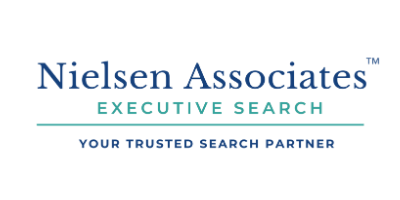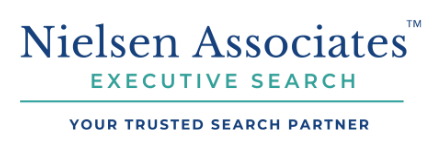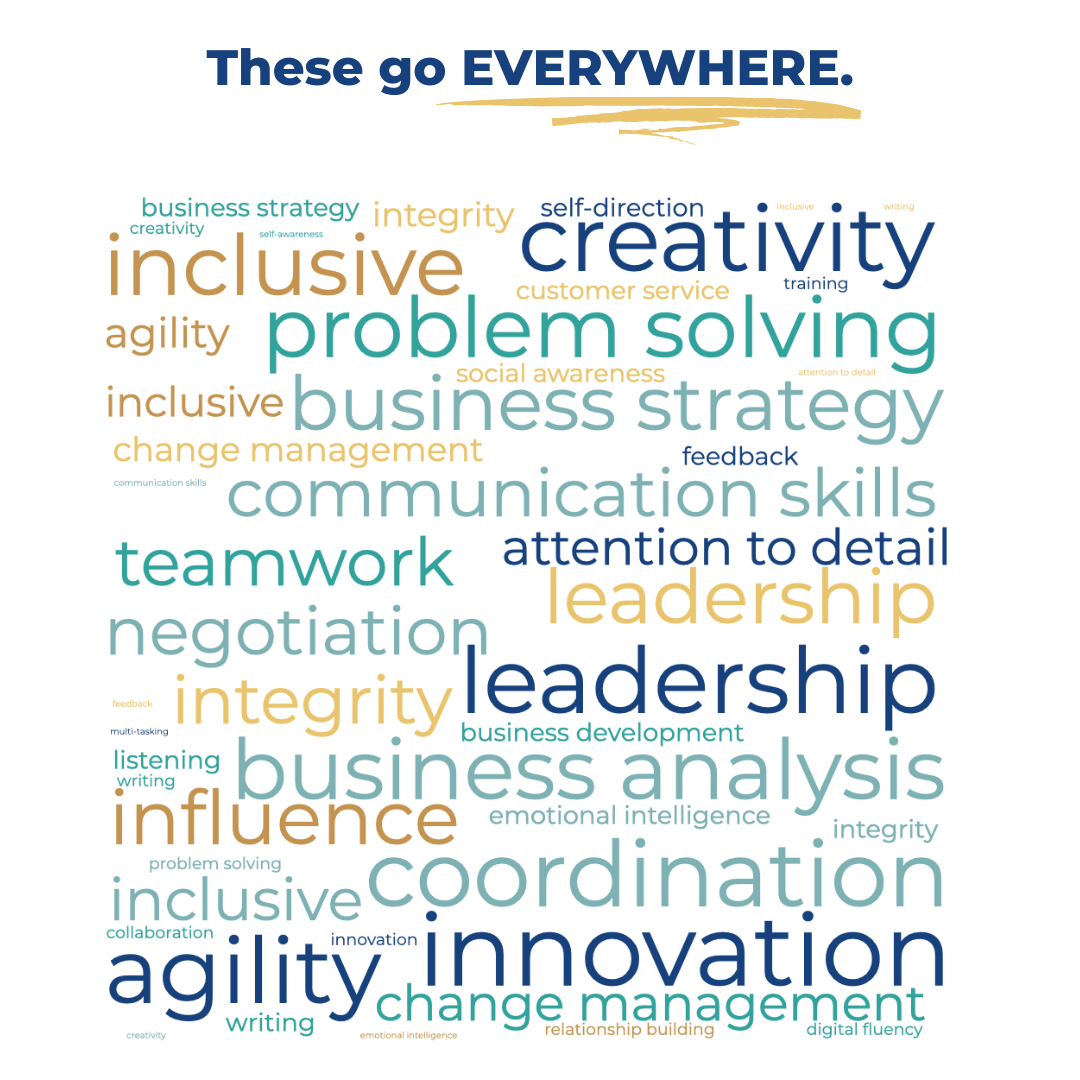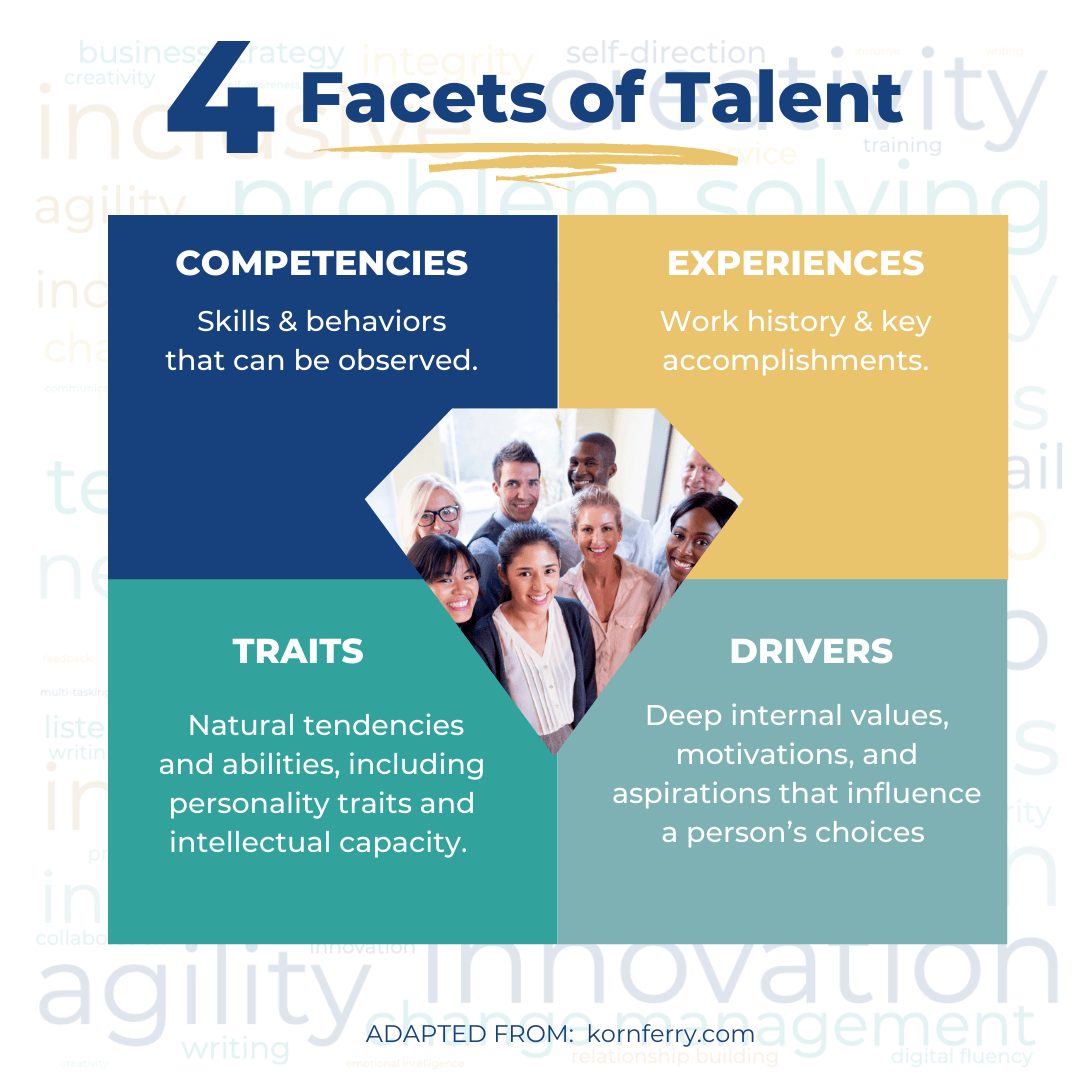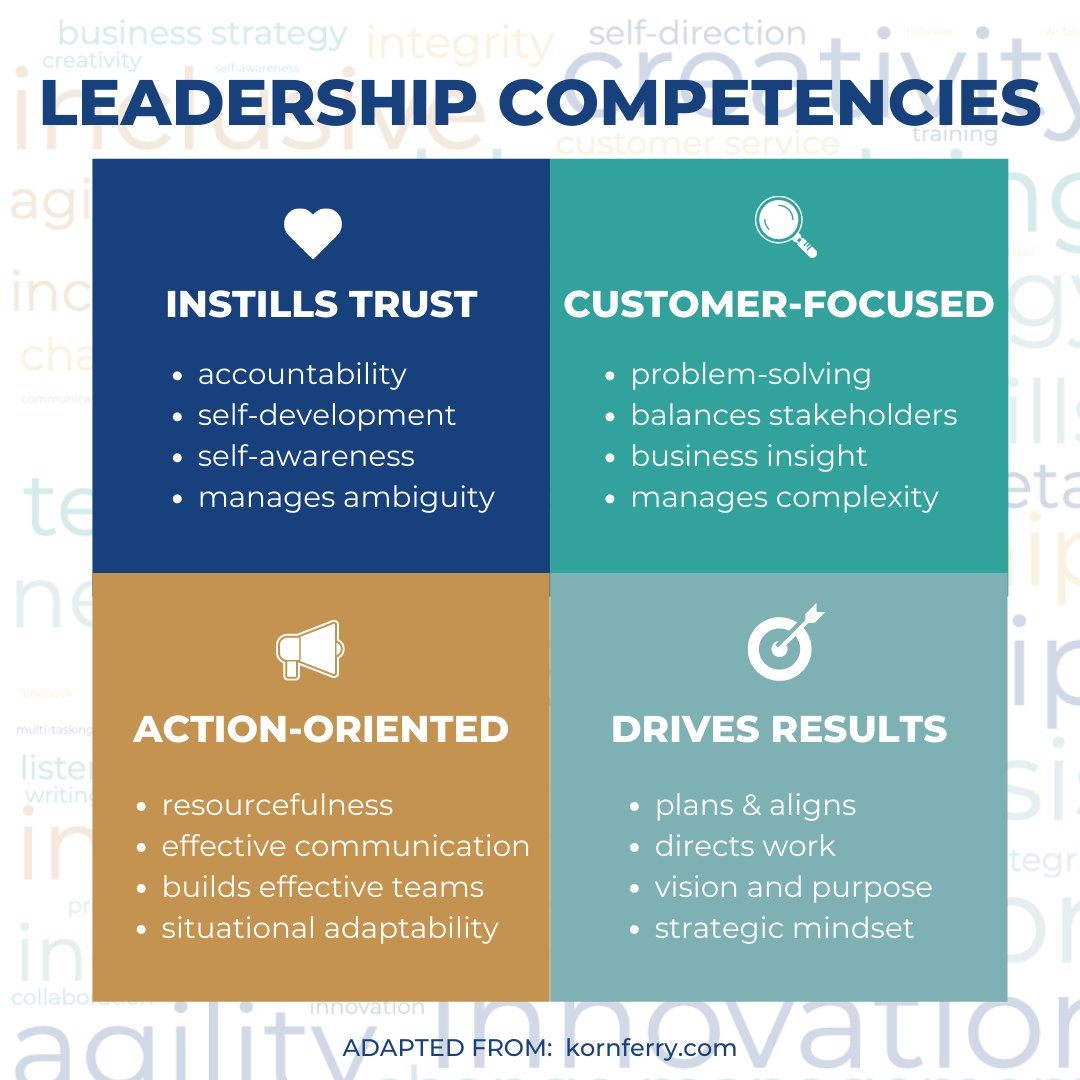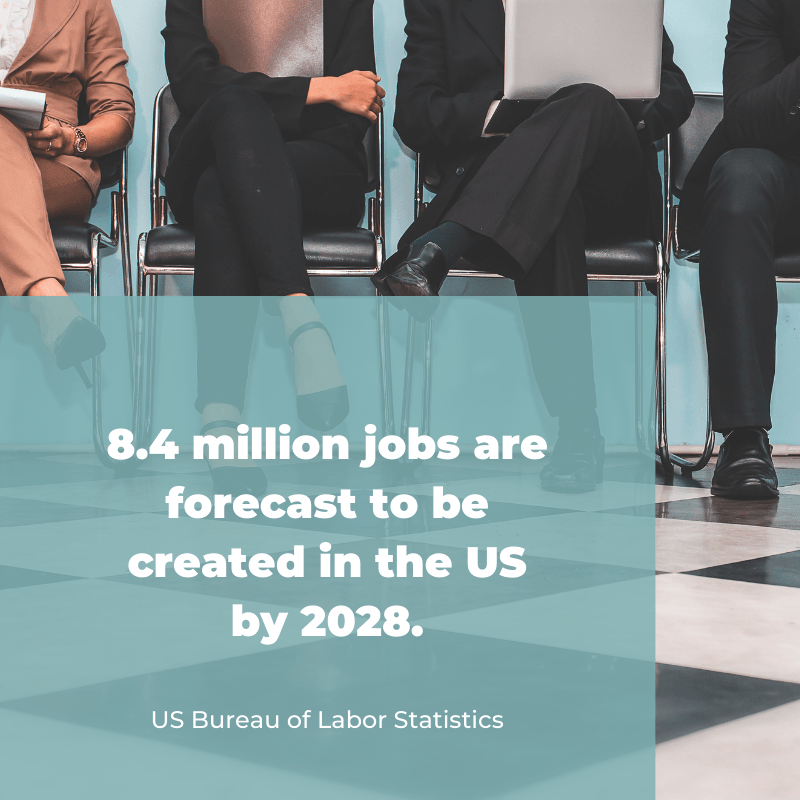Solutions for a Candidate-Driven Market

Are you struggling to attract talent and fill open positions? You’re not alone. In the aftermath of COVID, there’s a set of polar, opposing forces making a mark on today’s employment market.
Here’s what’s behind the challenge:
In a workplace that’s more digital and remote than ever, there isn’t a shortage of work. Employers need leaders at every level who can manage change; and perform more strategic functions, such as business analysis, process improvement, and trust-building. And the US Bureau of Labor Statistics has forecasted that 8.4 million jobs will be created in the US by 2028.
On the flip side, companies who are trying to ramp up are facing a shortage of workers. During the height of COVID, many people made the decision to retire 2 - 3 years earlier than they were planning for a variety of reasons — including the shift to remote work; more time at home with family; plus the fear of contracting a virus with severe effects for older adults. In the third quarter of 2020, roughly 28.6 million Baby Boomers retired, according to the Pew Research Center. And for many professionals, the pandemic has sparked a shift in direction in what media outlets have dubbed “ the great resignation .” In July 2021, the BBC and YahooNews reported that “employees are leaving the workforce or switching jobs in droves.” People are seeking change, and they want opportunities that are more autonomous, flexible, and rewarding; with better wages.
As a result, we have a candidate-driven employment market where qualified job-seekers are receiving multiple offers. Employers need to make attractive deals and fast decisions to secure a hire. These strategies can help you find fresh talent and navigate the challenges that everyone is feeling.
Rethink Job Requirements & Job Ads
1. Focus on core requirements
Identify what can be trained on the job rather than including an exhausting (and possibly intimidating) list of
pre-requisite skills and certifications in job ads. Studies show that women are less likely to apply to jobs where they don’t meet 100% of the criteria, while men will apply to jobs for which they meet 60% of the requirements. Encourage more candidates to apply by scrapping unnecessary details, such as secondary responsibilities; or certifications that can be obtained after a hire is made.
2. Screen for transferable skills.
Transferable skills are portable—they’re the abilities that can be transferred from one job (or company) to another. Unlike technical skills and industry knowledge (which can be trained) transferable skills are an indicator of a candidate’s versatility, adaptability, and leadership ability. When you emphasize transferable skills during a talent search, you can uncover someone’s natural competencies, traits, and motivational drivers to gain insight on their potential for growth at your organization. Here’s a list of transferable skills you may want to focus on:
TRANSFERABLE COMPTENCIES AND TRAITS
Agility
Adaptive Learning
Analysis
Attention-to-Detail
Appreciation for Diversity
Change Management
Communication Skills
Creativity
Critical Thinking
Collaboration
Compassion
Conflict Resolution
Customer Focus
Data Analysis
Digital Fluency
Decision-making
Empathy
Emotional Intelligence
Inclusion
Influence
Innovation
Integrity
Presentation Skills
Problem-solving
Productivity
Sales skills
Self-direction
Time-Management
Team Leadership
3. Be flexible on experience level and minimum number of years in an industry.
If you require a minimum number of years within a specific industry, ask yourself why. If someone has been sitting at a desk for ten years in the same industry, it doesn’t necessarily mean that they are the most competent or qualified candidate for an opening. When you specify a minimum number of years, you’re essentially screening out emerging talent, recent grads, plus rockstar veterans with a ton of insight and experience from other industries. When experience level is a “must-have” for a senior role, keep in mind that transferable competencies (such as emotional intelligence or critical thinking) are the keys to long-term success and growth potential — and they have nothing to do with industry.
Strengthen and Reinforce Your Network of Talent
An estimated 95 percent of companies rely on LinkedIn and Indeed to find candidates. Expand your network beyond top career sites to find hidden talent and passive candidates who may not be actively seeking employment. Try these creative sourcing strategies:
1. Build strong relationships with external search firms.
Experienced search firms (such as our team) nurture a deep network of relationships. They can identify and qualify passive candidates (especially at the senior level) who may not be active on career sites. They'll present candidates who you can't find online; help you fill challenging roles; recommend progressive talent solutions you might not have considered; and they’re your go-to solution when you need to conduct a confidential search.
2. Take your social media strategy to the next level.
Connect with the talent that you’re seeking in the places where they naturally hang out, which nowadays means social media. 73% of millennials found their last job on a social network. And the average Gen Z member maintains seven social media profiles (and over the coming years, they will contribute 61 million employees to the workforce.)
When it comes to social media recruiting, posting job ads on your company’s facebook page is just the beginning. Social platforms allow you to actively curate and engage with a network of talent. Hashtag searches help you connect with individual content creators who have highly specialized skills sets they are passionate about. And you can connect with their audience, including followers, and those who like and comment. It’s a way to find people who are naturally interested in the career opportunities that you’re offering. For example, if you’re looking for a UX Manager, search for #UX, or #UXDesign. And, you can get more specific by searching for content tagged with coding languages that are required. Recruiters can also start groups on LinkedIn or Facebook to attract candidates within niche industries (marketing or finance, for example.) Industry groups are a platform for personalized, targeted employer branding campaigns that resonate deeply with members.
3. Implement an employee referral program
Think of happy employees as an extension of your recruiting team. They are your employer brand ambassadors; and they can speak with credibility about why it’s great to work at your company. Design an incentivized referral plan that rewards employees whenever they refer a candidate who results in a hire.
4. Recruit internally and up-skill promising candidates.
Develop and maintain a system for internal job postings. When internal mobility is part of a comprehensive succession plan that includes career development programs and career paths, you’re making an investment in company culture that has ROI. According to Bersin by Deloitte, organizations with a strong learning culture experience 30-50% higher engagement and retention.
Target New Populations of Workers
Identify new demographics of workers and embrace the flexibility of a fully-equipped digital workplace that supports remote work; and then develop personalized employer branding campaigns that they’ll find appealing. Here are some to consider:
- Remote workers from around the globe
- Retired professionals and baby-boomers
- Stay-at-home parents
- LGBTQ
- Women
To design personalized campaigns, be sure to answer the question, “Why would I want to work here?” For example, to appeal to female candidates, you might showcase key contributions made by women on your leadership team. And to appeal to stay-at-home parents, you can highlight all of the perks of your flexible, family-first, digital culture.
Fill challenging positions fast with Nielsen Associates.
Our recruiters are industry experts and we have a deep network of talent. We can quickly present highly qualified candidates for any
Marketing,
Human Resources, or
Finance & Accounting role.
Request a free consultation with a recruiter to learn more about our range of services.
References from this article:
https://www.bbc.com/worklife/article/20210629-the-great-resignation-how-employers-drove-workers-to-quit
https://www.npr.org/2021/06/24/1007914455/as-the-pandemic-recedes-millions-of-workers-are-saying-i-quit
https://news.yahoo.com/great-resignation-haunts-employers-trying-100900909.html
https://www.bls.gov/news.release/ecopro.nr0.htm
https://builtin.com/recruiting/social-media-recruiting
